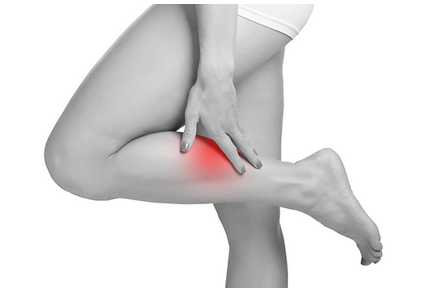


Muscle spasms are involuntary contractions occurring in the muscle tissues. From the medical point of view, a cramp is a type of spasm with a shorter duration of action; however, both these terms are used interchangeably. Spasms are generated in any part of the body, including neck, shoulder, back of legs, knees or abdomen due to spontaneous contraction of the muscle cells. The spasm may be painful and sharp or imperceptible according to the location and size of the muscle involved.

It is based on the different types of muscles.
Involuntary twitching of muscles is a major problem as it can last for long duration of time and may require medicines to resolve or control the spasm and the pain associated with it.
After discussing "how long do muscle spasms last?" let’s discuss the causes of muscle spasms.
Majority of the cases get this pain abruptly without a proper underlying cause. In other instances, this occur due to dehydration, constant muscle movement, prolonged immobilization of a muscle group, strenuous activities, etc.
Majority of the muscle cramps just subside causing no harm to the individual, yet some may indicate underlying medical illnesses such as:
Furthermore having diseases such as diabetes, nerve, liver and thyroid disorders can increase the risk of occurrence of muscle cramps.
How long do muscle spasms last? You already know the answer. But how to manage them?
1. Make Sure You Are Not Suffering from Electrolyte Imbalances
As mentioned above, maintaining the electrolyte concentration in optimal levels is important to prevent muscle cramps. Main electrolytes that cause muscle spasm include potassium and magnesium. Out of these two, low potassium levels (hypokalemia) are the most common reason for the occurrence of muscle cramps. Usually electrolytes imbalances occur due to consumption of processed food and during physiological changes in the body such as before beginning of a menstrual cycle. Having a well-balanced diet and doing regular exercises to maintain a healthy body can prevent muscle spasms.
Lack of vitamin B also causes muscle cramps in lower extremities. To avoid this, make sure you include vitamin B containing foods in your diet. Some of these foods include cage-free eggs, grass-fed meat, fish, grains and legumes.
2. Do Muscle Stretching
Physical activity plays a major role in prevention of muscle cramps. When you are physically active, you are more flexible and there is less inflammatory processes going on in your body; thus you have a lesser tendency to muscle cramps.
Even though physical activity helps to prevent muscle spasms, yet excessive strenuous physical activities have been found to increase the risk of getting muscle cramps. So make sure your physical activity does not make you overly fatigued. Also to do proper warm up and cool down exercises before and after doing exercises.
In your exercise schedule, make sure to allocate 10-15 minutes to stretching different muscle groups in the body. Each stretching session should last up to 20-30 minutes.
As physical activity is important to prevent muscle cramps, in the same way sufficient rest is also of equal importance to maintain the integrity of your musculature. Hence, plan your exercise schedules accordingly.
3. Keep Hydrated
Dehydration is another cause for the occurrence of muscle cramps. So to prevent muscle spasm, it is essential to drink enough water. The amount of water you should drink depends on many factors such as your age, level of physical activity, body mass index, gender, etc.
Apart from individual factors, environmental factors too affect the amount of water that should be consumed per day. Especially during hot days, make sure you drink a lot of water to ensure that you are properly hydrated. Excessive sweating and thirst lead to muscle fatigue, which can cause muscle cramps.
4. Apply Heat/Cold on Sensitive Muscle Groups
If you get muscle cramps frequently, try applying heat by keeping a warm towel on that specific muscle group. It may help to relieve pain and tightness. You can also try using a heating pad. Keep the heating pad on the sensitive muscle group and do massage for a few minutes. This really helps to prevent muscle cramps. Usage of ice pack is also an effective home remedy to relieve pain.
5. Maintain Correct Posture
Posture is a vital aspect that you should consider to prevent the occurrence of muscle spasm. Bending forward while you are walking and having a bad posture while you are exercising can increase the risk of getting muscle cramps.
One such inflammatory condition, which occurs due to incorrect posture, is kyphosis. Due to this condition, the individual gets muscle spasm in back muscles.
6. Try Epsom Salt Baths
Epsom salt, which has high content of magnesium helps to relieve muscle tension. Adding Epsom salt into warm water and soaking your tense muscles in this water help to relieve muscle spasm.
7. Take Medication
In the modern world, many treatment modalities are available to get rid of muscle cramps. Deciding on the best pharmacological therpay depends on various individual factors such as "how long do muscle spasms last", other comorbidities etc. Before achieving successful symptomatic control, many drugs may have to be tried in various doses, to find the best drug and the most accurate dosage. Few of the drugs that are being frequently used include: